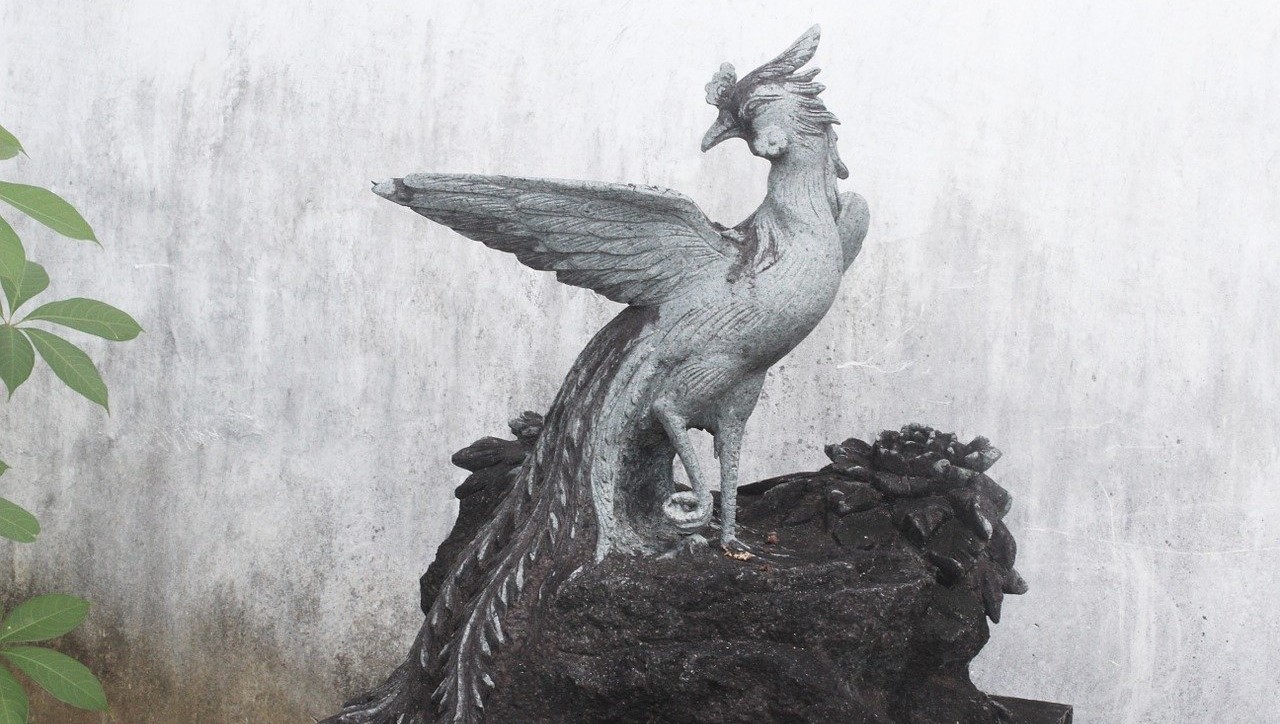One of my favorite fairy tale elements is magical birds. They swoop into stories all over the world, from the little birds who helped the Grimms’ Cinderella to Hans Christian Anderson’s magical nightingale. Birds in literature often symbolize dreams coming true—certainly the case with Cinderella. In other tales birds are symbolic of truth or divine messages. Whenever a fairy tale hero encounters a bird, it always seems to fly in to change that character’s path.
Of all the magical, fate-changing birds you find in stories, none is more dazzling than the firebird.
Firebird or Phoenix?
Now I know what you’re thinking: a firebird is just another name for a phoenix, right? Actually these two birds are NOT interchangeable and are from completely different parts of the world.
The phoenix originated from African myths and found its way into the writings of the ancient Egyptians and Greeks. Thanks to the phoenix’s popularity in European folklore, most of us are familiar with its ability to burst into flames and be reborn from its own ashes. Despite their association with fire, traditional phoenixes only burst into flames when they’re about to die.
In contrast, the firebird is primarily from Russia and appears in other Slavic fairy tales. Unlike the phoenix, the firebird lives its entire life aflame. Firebirds are almost always depicted as having burning red, orange, and yellow plumage or golden, glowing feathers.
A Bringer of Change—and Trials
Firebirds have a wide variety of powers depending on the story you read. In general they always bring a change of fate to anyone who touches their feathers or attempts to capture them. The bird’s power is so great that even a single feather is enough to change one’s fortune—a good change or a series of very bad changes.
There are so many stories of the firebird that I couldn’t possibly cover them all. But I can trot out three tales that are arguably the most famous.
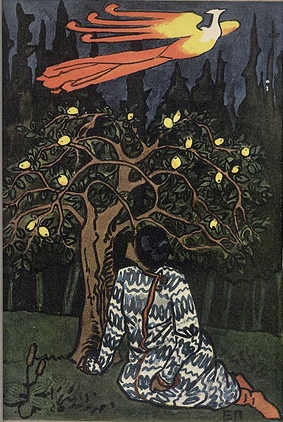
Tale #1: A Brave Archer and His Magic Horse
My favorite firebird tale is also one of the first versions that was ever written down. The Fire-Bird, the Horse of Power, and the Princess Vasilissa tells the story of a young archer and his magical talking horse. While hunting in the forest, the archer finds a pure gold feather glittering like a flame. The archer immediately knows it belongs to the firebird, but his horse warns him to leave it where it is or he’ll sorely regret it. In true fairy tale fashion, the archer doesn’t listen.
Instead the archer takes the feather to his Tsar as a present, and so begins all the man’s troubles. The Tsar is wildly greedy and sends the poor archer on a series of impossible tasks. First he must capture the firebird for his Tsar. Then kidnap a beautiful princess for the Tsar to marry. Then fetch the princess’s amazing wedding dress from the bottom of the sea. And jump into a cauldron of boiling water when the princess refuses to marry the Tsar.
Of course the poor archer realizes he should’ve left that feather alone. But each time he thinks he can’t complete a task, his horse magically delivers him. When the archer emerges from the boiling water unscathed and more handsome than before, the greedy Tsar jumps into the water himself to partake of the magic—and dies. In the end, the archer becomes the new Tsar and marries the lovely princess himself.
This random little story definitely illustrates why you shouldn’t be greedy. But it’s also a classic example of the firebird bringing fortune to a peasant protagonist. In lots of firebird stories, the bird brings good things to common people, even if they have to go through miserable trials first. The happy ending here is kind of a mixed message since the archer was warned not to meddle with magical feathers. Doing so brought a lot of trouble his way, but he did eventually come out on top.
Tale #2: A Prince, a Bird, and a Wolf
The second famous story is The Tale of Ivan Tsarevich, the Firebird, and the Gray Wolf. This version also features a grand quest to capture the firebird, but here the main character is the Tsar’s son. (This story closely resembles the Grimm Brothers’ lesser-known story The Golden Bird in case you were wondering.)
Here the firebird is once again a thorn in the royalty’s side. This time the firebird is stealing golden apples from the Tsar’s prized tree. When the bird drops a smoldering feather in the garden, the youngest son picks it up and tells his father. The Tsar sends his three sons on a journey to capture the firebird, and the youngest son completes the task, also finding an enchanted gray wolf, a horse with a golden mane, and a beautiful princess along the way.
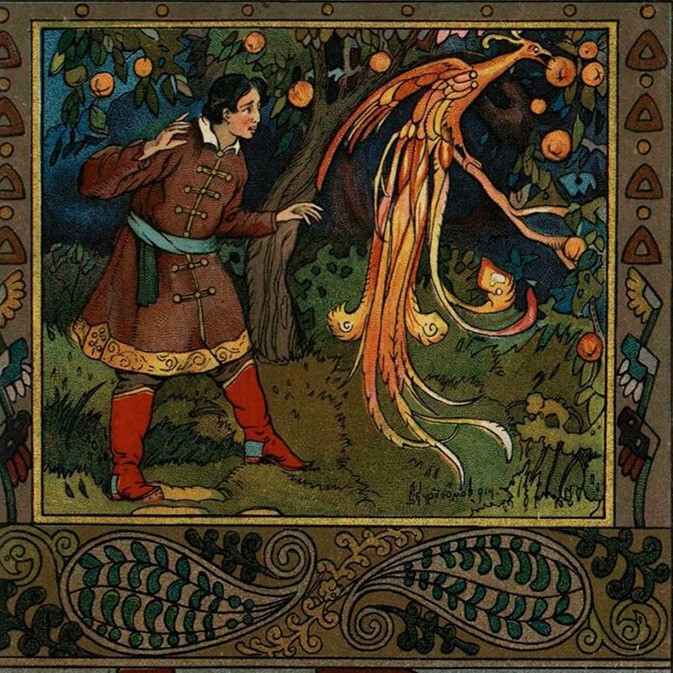
On his way home, the youngest prince’s jealous brothers kill him so they can claim his success as their own. The gray wolf uses his magical powers to bring the young prince back to life so he can return home, tell his father the truth, and marry the princess himself.
Once again, this is a story of an underdog—the prince who was last in line to inherit—coming out on top after touching the firebird’s feather. Take note that the firebird almost always shakes up the line of authority in its stories and often takes a jab at the current rulers. In some stories the firebird is a winged Robin Hood figure who gives the stolen golden apples to the peasants or uses his magic to drop pearls from his beak for the common folk to find.
The firebird’s tendency to take from the wealthy and give to the poor has established the firebird as a people’s hero, balancing out power when it can, bringing good to good people and knocking the greedy and powerful down a notch.
Tale #3: Igor Stravinky’s Firebird
If you’ve heard of the firebird at all, chances are that it’s from the famous music written by Russian composer Igor Stravinky for The Firebird ballet. Ballet impresario Sergei Diaghilev hired Stravinsky to write this score when he was extremely young and a relatively unknown composer in Russia. Together Diaghilev and Stravinsky created the onstage version of The Firebird released in 1910.
This modern version borrows characters from various Russian fairy tales. They borrowed the firebird and Prince Ivan from the gray wolf version, but they also introduced a troupe of thirteen dancing princesses and a magical garden owned by the evil sorcerer Kashchey the Deathless. The sorcerer is known for changing trespassers into stone, but brave Prince Ivan goes anyway and sees the flaming firebird flying through the sorcerer’s garden.
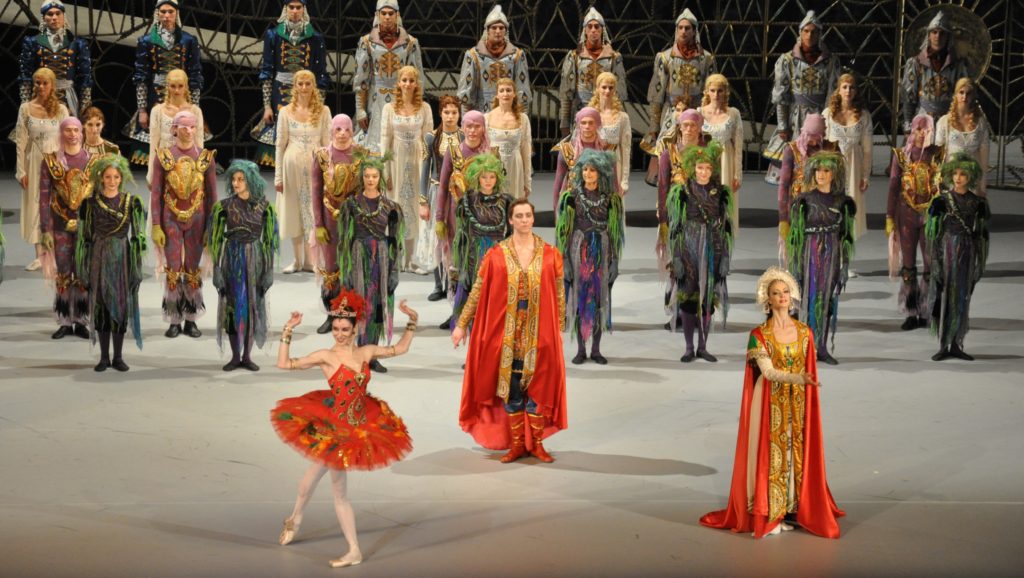
When Ivan captures her, the firebird begs for her release. Prince Ivan decides to free her, and for his kindness, she gives Ivan one of her flaming feathers to call for her aid if he ever needs her. Later in the ballet the prince enlists the firebird’s help to free the thirteen princesses from the sorcerer, put Kashchey and his minions under an enchanted sleep, and defeat the sorcerer by cracking open the egg that contains his power.
At the end, Prince Ivan rides off victorious and marries the most beautiful of the princesses.
From Foe to Friend
It’s interesting to see how the firebird has evolved over the centuries from an annoyer of the royalty to a friend. The Russian populace had a complicated relationship with their royalty, which eventually led to the Russian Revolution of World War I. But I find it interesting that Diaghilev and Stravinsky chose to depict a kind royal who acts nobly throughout the ballet, granting the firebird freedom and fighting evil.
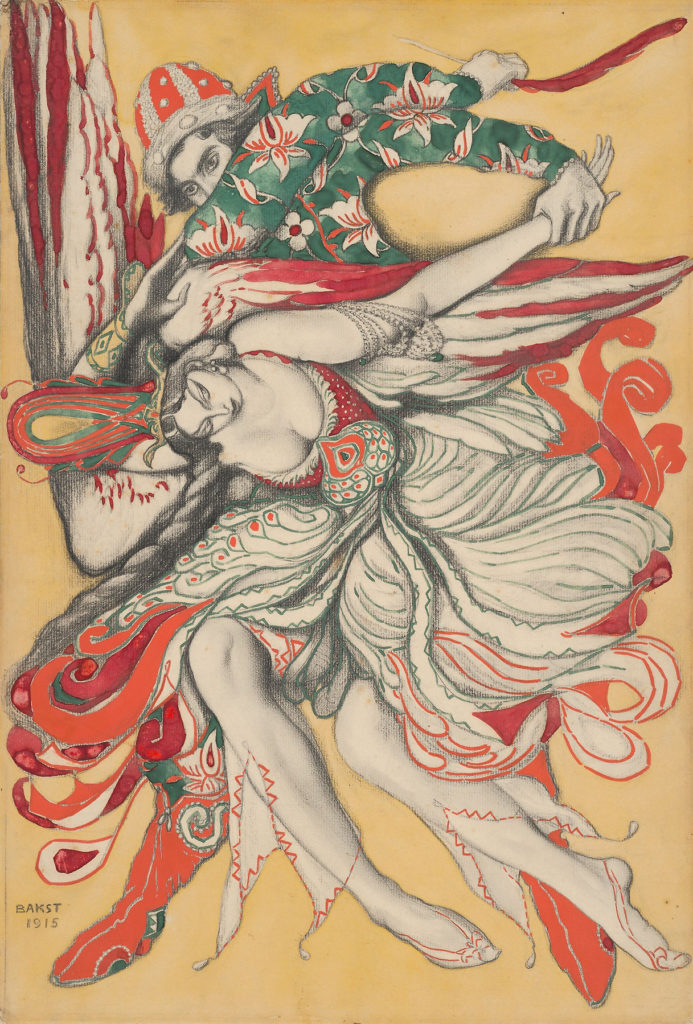
Their storytelling choices for the firebird herself are actually right in line with previous depictions. Namely that the firebird always leads people to the fate they deserve. The big difference here is that the firebird herself becomes the protagonist’s magical helper, playing a much more active role in fulfilling his dreams. I think this interpretation says quite a bit about modern fairy tales in general: that magic birds are not just a presence of truth and rightness anymore. These days they’re more likely to swoop in there and sort the lentils from the ashes for Cinderella and make sure Prince Ivan comes out victorious.
Honestly, this more tangible, active role of magical birds rescuing kind heroes feels like a hopeful message. At least that’s my take on it.
A Taste of the Firebird’s Score
If you’ve heard this music anywhere, it was probably while watching Disney’s Fantasia 2000. In any case, I highly recommend you take a moment to enjoy the finale of The Firebird. It’s widely considered one of the greatest pieces of music of all time. This performance by the Vienna Philharmonic Orchestra and Valery Gergiev’s passionate conducting really do the song justice.

